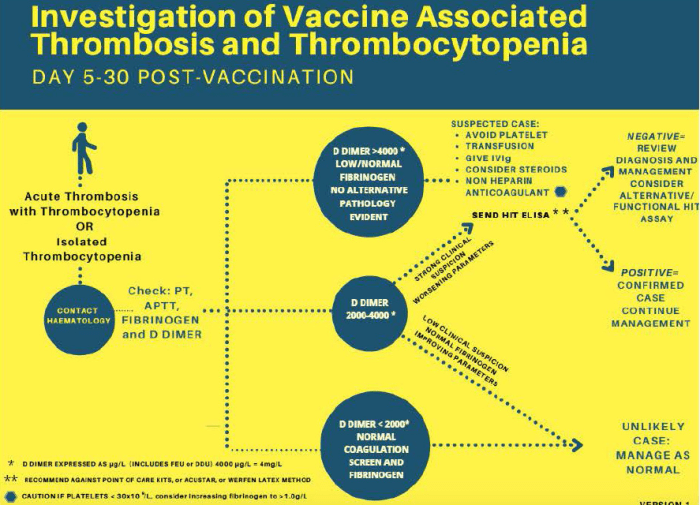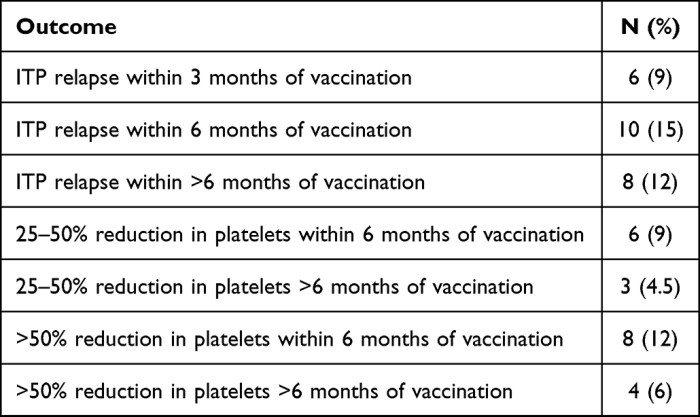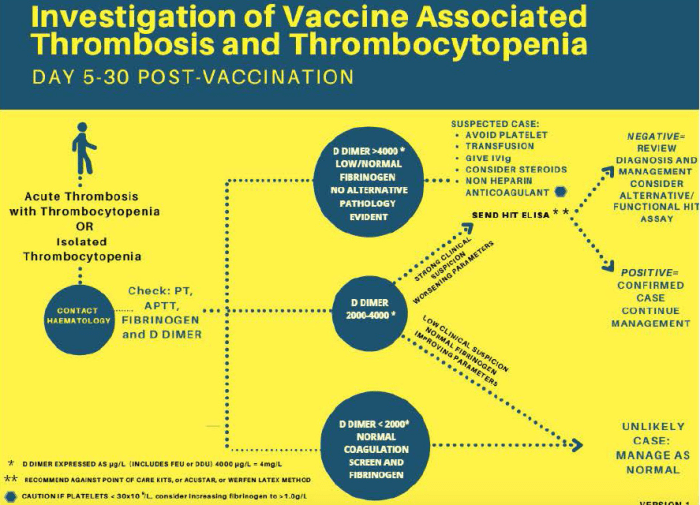How long do allergies last? This question plagues many, especially during allergy season. Understanding the duration of allergic reactions depends on several factors, from the type of allergen to individual sensitivity. From mild sniffles to severe reactions, we’ll explore the timeline of various allergies, how they differ, and what you can do to manage them.
This comprehensive guide explores the different types of allergies, their triggers, and the typical duration of reactions. We’ll also delve into the factors that influence the length of an allergic response, from the amount of allergen exposure to individual sensitivity and environmental conditions. We’ll examine chronic allergies and their differences in duration compared to acute reactions, and finally, we’ll discuss effective treatment strategies and long-term management techniques to minimize the impact of allergies on your life.
Introduction to Allergies
Allergies are a common health issue where the immune system overreacts to a harmless substance, called an allergen. Instead of treating the allergen as a harmless foreign particle, the immune system mistakenly identifies it as a threat, triggering a chain reaction that leads to allergic symptoms. This overreaction can manifest in various ways, from mild discomfort to life-threatening situations.
Understanding allergies involves recognizing the different types of reactions, their triggers, and the severity of the response.The immune system’s job is to protect the body from harmful invaders like bacteria and viruses. In an allergic response, the immune system mistakenly identifies harmless substances like pollen, pet dander, or certain foods as dangerous threats. This misidentification prompts the release of histamine and other chemicals, causing the allergic symptoms we experience.
Common Allergy Types and Triggers
Allergies can affect various parts of the body and have different triggers. Common types include allergic rhinitis (hay fever), food allergies, and skin allergies like eczema. The triggers for these allergies are diverse, ranging from environmental factors to specific foods or materials.
Types of Allergic Reactions, How long do allergies last
Allergic reactions vary in severity, ranging from mild discomfort to life-threatening anaphylaxis. Mild reactions might include itchy skin, a runny nose, or hives. Severe reactions, on the other hand, can involve difficulty breathing, swelling of the throat, and a drop in blood pressure. Recognizing the signs of both mild and severe reactions is crucial for prompt medical intervention.
Examples of Allergic Reactions (Mild to Severe)
Mild reactions often involve localized symptoms. For example, contact dermatitis, triggered by substances like nickel or latex, might manifest as skin redness, itching, and blistering at the contact site. Food allergies, like those to peanuts or shellfish, can lead to digestive upset, hives, and itching.Severe reactions, like anaphylaxis, require immediate medical attention. Symptoms can include swelling of the face, throat, and tongue; difficulty breathing; rapid heartbeat; and dizziness.
Anaphylaxis is a potentially life-threatening condition requiring an epinephrine injection (commonly known as an EpiPen).
Table of Common Allergies
| Allergy Type | Common Triggers | Symptoms |
|---|---|---|
| Allergic Rhinitis (Hay Fever) | Pollen (trees, grasses, weeds), dust mites, mold spores, pet dander | Runny or stuffy nose, sneezing, itchy eyes, watery eyes, congestion |
| Food Allergies | Peanuts, tree nuts, milk, eggs, soy, wheat, fish, shellfish | Hives, itching, swelling, difficulty breathing, vomiting, diarrhea, abdominal pain |
| Skin Allergies (Eczema) | Certain detergents, fabrics, chemicals, allergens from the environment, stress | Dry, itchy, inflamed skin, rash, cracking, redness, blisters |
| Insect Sting Allergies | Bees, wasps, hornets, ants | Hives, itching, swelling, difficulty breathing, throat tightness, nausea, vomiting, low blood pressure |
Duration of Allergic Reactions
Allergic reactions, ranging from mild discomfort to life-threatening anaphylaxis, can manifest in various ways and durations. Understanding the typical timeframes for different reactions is crucial for recognizing symptoms and seeking appropriate medical attention. This section delves into the duration of allergic responses, considering factors like the allergen type and individual susceptibility.Allergic reactions are not uniform; their duration depends heavily on the type of allergen, the route of exposure (e.g., airborne, ingested), and the individual’s immune response.
Some reactions may be immediate, while others develop gradually over time. This variability underscores the importance of recognizing the signs and symptoms specific to each individual and allergen.
Allergy symptoms can linger for a few days, sometimes even weeks, depending on the trigger and your individual response. Interestingly, dry skin in ears can sometimes be a symptom of underlying allergies , which can further complicate how long the overall allergy-related discomfort lasts. So, while a specific allergy might resolve quickly, the associated issues could continue for a longer period.
Typical Timeframes for Allergic Reactions
The time it takes for an allergic reaction to develop and resolve varies greatly depending on the allergen. Reactions to airborne allergens often manifest within minutes to hours after exposure, whereas ingested allergens might take a longer period to produce a response. This difference stems from the way the immune system processes these substances.
Airborne Allergens vs. Ingested Allergens
Reactions to airborne allergens, such as pollen or dust mites, typically develop more quickly than reactions to ingested allergens, like food. This is because the allergens enter the body through the respiratory system, triggering an immediate immune response. Reactions to ingested allergens may take longer to develop, sometimes even hours after consumption, as the digestive process plays a crucial role in the allergen’s absorption.
Factors Influencing Reaction Duration
Several factors can influence the duration of an allergic reaction. The amount of allergen encountered, the individual’s sensitivity to the allergen, and the presence of co-existing health conditions all contribute to the reaction’s severity and length. Furthermore, the specific allergen and the individual’s prior exposure history can play a role in how the body responds. A person with a history of severe allergic reactions to a particular food might experience a faster and more pronounced response compared to someone experiencing their first encounter with the same food.
Examples of Allergen-Specific Reactions
Pollen, a common airborne allergen, can trigger symptoms like sneezing, runny nose, and itchy eyes within minutes to hours of exposure. Similarly, dust mites, another common airborne allergen, can cause similar respiratory symptoms, though the reaction may not be as immediate. Ingested allergens, such as peanuts or shellfish, can trigger reactions ranging from mild skin rashes to severe anaphylaxis, with the reaction time varying from a few minutes to hours.
Duration of Reactions for Various Allergens
| Allergen | Reaction Type | Duration (minutes/hours/days) |
|---|---|---|
| Pollen | Rhinitis, conjunctivitis | Minutes to hours |
| Dust Mites | Asthma, rhinitis | Minutes to hours |
| Food (e.g., peanuts) | Skin rash, anaphylaxis | Minutes to hours |
| Insect stings (e.g., bee) | Localized swelling, anaphylaxis | Minutes to hours |
| Latex | Skin rash, hives | Minutes to hours |
Factors Affecting Allergy Duration

Understanding how long an allergic reaction lasts is crucial for effective management. Different factors influence the intensity and duration of symptoms, from the amount of allergen exposure to the individual’s immune response and environmental conditions. This knowledge empowers individuals to anticipate and mitigate the impact of allergies on their daily lives.
Allergen Exposure Amount
The quantity of allergen encountered directly impacts the severity and duration of an allergic response. A small amount of exposure might trigger a mild, short-lived reaction, while a significant exposure can lead to a more intense and prolonged reaction. For example, a person with a pollen allergy might experience mild sneezing after a brief walk in a park on a sunny day.
However, spending hours in a heavily pollen-filled environment on a windy day could result in more severe and prolonged sneezing, runny nose, and itchy eyes.
Individual Sensitivity
Individual sensitivity to an allergen plays a pivotal role in determining the duration and severity of an allergic reaction. Some individuals are highly sensitive to allergens, while others exhibit only mild responses. A person with high sensitivity to peanuts might experience a severe, life-threatening reaction (anaphylaxis) from a very small amount of exposure, lasting for hours or even days.
Conversely, someone with a milder sensitivity might experience only mild symptoms that resolve within a few hours.
Immune System’s Role
The immune system’s response is fundamental to both the initiation and resolution of allergic reactions. The immune system’s activation in response to an allergen can trigger the release of inflammatory mediators, leading to the characteristic symptoms. The duration of the reaction depends on how quickly the immune system can return to its normal state. A prolonged immune response to an allergen can result in a more prolonged allergic reaction.
Environmental Factors
Environmental factors, such as weather and humidity, can significantly influence the duration and severity of allergic reactions. For instance, high pollen counts often coincide with dry, windy weather, intensifying symptoms for those with pollen allergies. Similarly, high humidity can sometimes worsen symptoms of mold allergies, leading to prolonged discomfort. This suggests a strong correlation between environmental conditions and the duration of allergic responses.
Summary of Factors Affecting Allergy Duration
| Factor | Description | Impact on Duration |
|---|---|---|
| Allergen Exposure Amount | The quantity of allergen encountered. | Higher exposure leads to longer, more severe reactions. |
| Individual Sensitivity | The degree of responsiveness to an allergen. | Higher sensitivity correlates with more intense and potentially prolonged reactions. |
| Immune System Response | The body’s reaction to the allergen. | Prolonged immune responses can result in longer lasting symptoms. |
| Environmental Factors (e.g., Weather, Humidity) | Conditions such as wind, rain, and humidity. | These factors can influence the amount of allergen in the air and exacerbate symptoms, leading to longer reactions. |
Types of Allergic Reactions and Duration
Understanding the different types of allergic reactions and their varying durations is crucial for effective management and treatment. This knowledge empowers individuals to recognize the signs and symptoms and seek timely medical intervention. Prompt recognition and appropriate action can significantly reduce the severity and duration of the reaction.
Immediate Hypersensitivity Reactions
Immediate hypersensitivity reactions, often referred to as Type I reactions, are characterized by a rapid onset of symptoms following exposure to an allergen. These reactions are mediated by the release of histamine and other inflammatory mediators from mast cells. The reaction typically manifests within minutes to hours of exposure. Examples include anaphylaxis, hives, and allergic rhinitis.
Manifestation of Immediate Hypersensitivity Reactions
These reactions typically manifest with a rapid onset of symptoms. A common example is anaphylaxis, characterized by a sudden and potentially life-threatening drop in blood pressure, difficulty breathing, and swelling of the throat and face. Hives, or urticaria, appear as itchy, raised welts on the skin. Allergic rhinitis, often called hay fever, presents with symptoms like sneezing, runny nose, and itchy eyes.
The symptoms can vary in intensity, depending on the individual and the specific allergen.
Duration of Immediate Hypersensitivity Reactions
The duration of immediate hypersensitivity reactions can vary significantly. Symptoms often subside within a few hours, though severe reactions, like anaphylaxis, require immediate medical attention to prevent potentially life-threatening complications. In mild cases, such as hives, symptoms may resolve within a few hours or a day. However, recurrent exposure to the allergen may lead to prolonged symptoms.
In anaphylaxis, prompt medical intervention is critical to reduce the duration and severity of the reaction.
Figuring out how long allergies last can be tricky, varying greatly depending on the trigger and individual. While some seasonal allergies might linger for weeks, others can fade away in a few days. Luckily, boosting your immune system with high protein high fiber foods like beans and lentils can help your body fight off those pesky allergens, potentially shortening the duration of your allergy symptoms.
So, if you’re dealing with allergies, consider incorporating more high protein high fiber foods into your diet, and hopefully, your allergy symptoms won’t last as long!
Delayed Hypersensitivity Reactions
Delayed hypersensitivity reactions, also known as Type IV reactions, develop more gradually, usually appearing several hours to days after exposure to the allergen. These reactions are mediated by a different immune response mechanism, involving the activation of T cells. Examples include contact dermatitis and certain skin conditions.
Duration of Delayed Hypersensitivity Reactions
The characteristic duration of delayed hypersensitivity reactions is typically longer than that of immediate reactions. Symptoms like contact dermatitis often persist for several days or even weeks. The duration depends on factors such as the intensity of the initial exposure and the individual’s immune response. Symptoms can range from mild skin irritation to more severe inflammation and blistering.
Contact with certain metals, plants, or chemicals can result in delayed hypersensitivity reactions.
Comparison of Allergic Reaction Types
| Reaction Type | Symptoms | Duration |
|---|---|---|
| Immediate Hypersensitivity (Type I) | Anaphylaxis, hives, allergic rhinitis, asthma | Minutes to hours (severe cases require immediate intervention); mild cases may resolve in hours or days. |
| Delayed Hypersensitivity (Type IV) | Contact dermatitis, skin rashes, inflammation | Several hours to days or weeks, depending on the intensity of exposure and individual response. |
Chronic Allergies and Duration
Chronic allergies represent a persistent state of immune system reactivity to allergens, differing significantly from acute reactions. These conditions can significantly impact daily life, and their duration varies based on factors like individual health and exposure. Understanding the differences in duration and the influencing factors is crucial for effective management.Chronic allergies, unlike acute reactions, persist for extended periods, sometimes for years.
The duration can fluctuate, influenced by factors such as the individual’s immune response, environmental triggers, and overall health. This prolonged exposure can also lead to more severe symptoms and complications.
Dealing with pesky allergies can feel like a marathon, not a sprint! It’s tough to pinpoint exactly how long they’ll last, but sometimes you can find natural ways to ease the symptoms. For example, drinking bone broth, ideally around 30 minutes before meals according to the best time to drink bone broth guidelines found here , might help.
While there’s no magic bullet, the duration of allergy symptoms often depends on the specific allergen and individual factors. Hopefully, this helps your allergy relief journey!
Differences in Duration Between Acute and Chronic Allergies
Acute allergic reactions typically manifest as sudden, intense responses to allergens, often resolving within hours or days. Chronic allergies, on the other hand, are characterized by persistent symptoms, lasting weeks, months, or even years. The difference lies in the duration and intensity of the immune system’s response. For instance, a bee sting reaction might be acute, whereas eczema, a chronic condition, is marked by persistent skin inflammation.
Influence of Overall Health on Chronic Allergy Duration
An individual’s overall health plays a crucial role in the duration and severity of chronic allergies. Conditions like weakened immune systems, due to illnesses or other factors, can lead to a more prolonged and intense allergic response. Individuals with pre-existing conditions, such as asthma or autoimmune disorders, may experience more severe and prolonged allergic symptoms.
Impact of Ongoing Allergen Exposure on Chronic Allergies
Ongoing exposure to allergens is a major factor in the duration and severity of chronic allergic conditions. Repeated encounters with the trigger can lead to a heightened immune response, resulting in more frequent and intense symptoms. This is often seen in individuals with environmental allergies, where seasonal or year-round exposure to pollen or dust mites can lead to a continuous cycle of allergic reactions.
For example, a child living in a house with significant dust mite infestations may experience more severe and persistent allergic symptoms compared to someone with minimal exposure.
Examples of Chronic Allergies and Their Typical Duration
Chronic allergies manifest in various forms, each with its own typical duration and impact. The duration and severity depend on factors such as the individual’s response to the allergen and the effectiveness of management strategies.
- Seasonal Allergies (e.g., hay fever): These allergies typically peak during specific seasons, often lasting from spring to fall, although symptoms can vary based on geographical location and individual sensitivity. With consistent exposure to allergens like pollen, the duration and severity of seasonal allergies can be significant.
- Food Allergies: Food allergies can manifest at any age and persist throughout life. The duration of symptoms depends on the specific food, the amount consumed, and the individual’s sensitivity. Symptoms can range from mild discomfort to life-threatening anaphylaxis. Some individuals may outgrow certain food allergies, while others will experience them chronically.
- Asthma: Asthma, a chronic respiratory condition, is often triggered by allergens and can last a lifetime. Symptoms and severity vary greatly among individuals, influenced by environmental factors, and management strategies.
- Eczema (Atopic Dermatitis): Eczema is a chronic inflammatory skin condition that can have periods of remission and exacerbation. The duration of symptoms varies depending on the individual and triggers, with periods of flare-ups often lasting weeks or months. Triggers like stress, certain foods, and environmental factors can affect the duration and severity of eczema.
Comparison Table of Chronic Allergies
| Allergy Type | Average Duration | Severity |
|---|---|---|
| Seasonal Allergies | Spring to Fall (variable) | Mild to Moderate (often seasonal) |
| Food Allergies | Lifelong (or until outgrown) | Mild to Severe (potentially life-threatening) |
| Asthma | Lifelong | Mild to Severe (can be life-threatening) |
| Eczema | Lifelong with periods of remission and exacerbation | Mild to Moderate (can be severe) |
Treatment and Allergy Duration
Allergy treatments play a crucial role in managing the duration and severity of allergic reactions. Effective treatment strategies can significantly reduce the impact of symptoms, allowing individuals to lead more comfortable lives. By understanding how different treatments work and their potential effects, individuals can make informed decisions about their allergy management.Allergy treatments are not a one-size-fits-all solution; the most effective approach varies depending on the specific allergy, the severity of the reaction, and the individual’s overall health.
A combination of approaches often proves most beneficial.
Impact of Antihistamines
Antihistamines work by blocking the effects of histamine, a chemical released during allergic reactions. This blockage can significantly reduce the duration and intensity of symptoms such as itching, sneezing, and runny nose. Common antihistamines, like cetirizine or loratadine, are often effective in alleviating mild to moderate allergic reactions, providing relief for several hours.
Impact of Corticosteroids
Corticosteroids, both oral and inhaled, are potent anti-inflammatory medications. In cases of severe allergic reactions, such as anaphylaxis, corticosteroids can be crucial in reducing inflammation and preventing further complications. They can also shorten the duration of inflammation associated with allergic rhinitis or asthma.
Role of Allergy Shots (Immunotherapy)
Allergy shots, or immunotherapy, are a long-term treatment option. These injections gradually expose the body to small amounts of allergens, aiming to desensitize the immune system over time. The effect of immunotherapy is gradual, typically requiring several months to years of treatment to achieve a significant reduction in the duration and severity of allergic reactions. Success rates vary depending on the individual and the specific allergen.
Impact of Avoiding Allergens
Avoiding allergens is a crucial component of managing allergy symptoms. The duration of symptoms can be greatly reduced or eliminated by avoiding exposure to known allergens. For example, if someone is allergic to pollen, staying indoors during peak pollen seasons can drastically lessen the duration and severity of their allergic reactions.
Comparison of Allergy Treatments
| Treatment | Mechanism | Duration of Effect | Potential Side Effects |
|---|---|---|---|
| Antihistamines | Block histamine release | Several hours to a day | Drowsiness, dry mouth, stomach upset |
| Corticosteroids | Reduce inflammation | Variable, depending on dosage and route of administration | Increased risk of infection, osteoporosis, mood changes (with long-term use) |
| Allergy Shots (Immunotherapy) | Desensitize the immune system | Long-term (months to years), can potentially reduce allergic reactions permanently | Mild reactions at injection site, potential for systemic reactions (rare) |
Long-Term Management of Allergies: How Long Do Allergies Last

Managing allergies effectively extends far beyond the initial reaction. It’s a continuous process that requires proactive strategies and consistent effort. Long-term allergy management focuses on minimizing exposure to allergens and employing appropriate treatment plans to control symptoms and prevent future reactions. This involves understanding the triggers, implementing preventative measures, and maintaining open communication with healthcare professionals.
Environmental Control for Reduced Exposure
Effective allergy management hinges on reducing exposure to allergens. This proactive approach minimizes the frequency and severity of allergic reactions. The environment plays a crucial role in allergen exposure. Dust mites, pollen, mold spores, and pet dander are common culprits. Strategies for controlling these allergens include regular cleaning, proper ventilation, and implementing specific measures to reduce allergen presence in the home and workplace.
For instance, using allergen-proof bedding, frequently washing bedding, and keeping humidity levels in check can significantly reduce dust mite exposure. Regular vacuuming, dusting, and wiping surfaces help control the spread of airborne allergens. In cases of severe pollen allergies, staying indoors during peak pollen seasons or using air purifiers can dramatically lessen symptoms.
Effective Allergy Management Strategies
Managing allergies requires an individualized approach, tailored to specific triggers and reactions. Understanding personal triggers and developing strategies to minimize exposure is key. This involves careful observation of symptoms and identifying specific environmental factors that worsen allergies. Implementing strategies such as keeping pets out of bedrooms, using air purifiers, and avoiding known allergens like pollen or mold can dramatically lessen the duration and severity of reactions.
Consistent application of these strategies significantly impacts long-term allergy management. Maintaining a diary of symptoms and triggers is helpful for tracking patterns and understanding individual responses to different allergens.
Importance of Regular Checkups
Regular checkups with an allergist are essential for monitoring allergies and adjusting treatment plans as needed. Allergy symptoms can change over time, and treatment effectiveness can fluctuate. Regular assessments by a qualified allergist allow for adjustments to medication, immunotherapy, or other interventions to ensure optimal control. This proactive approach is crucial for preventing the severity and duration of allergic reactions from worsening over time.
An allergist can also provide guidance on lifestyle modifications, environmental controls, and specific treatment options tailored to individual needs.
Actionable Steps for Long-Term Allergy Management
- Identify Triggers: Keep a detailed log of your symptoms, noting the time of day, location, and any environmental factors present when symptoms occur. This helps pinpoint specific allergens and triggers.
- Implement Environmental Controls: Reduce allergen exposure in your home and workplace. This includes using allergen-proof bedding, regular cleaning, and keeping humidity levels in check. Consider air purifiers and using allergen-reducing products where possible.
- Develop a Personal Action Plan: Create a personalized plan outlining specific steps to take when experiencing allergy symptoms. This includes medication use, avoidance strategies, and emergency contacts.
- Maintain Regular Checkups: Schedule regular appointments with an allergist to monitor symptoms, adjust treatment plans, and discuss any new or changing issues.
- Seek Prompt Treatment: If allergy symptoms worsen or become severe, seek immediate medical attention. Delayed treatment can lead to complications.
Closing Notes
In conclusion, the duration of allergies varies significantly depending on the specific allergen, the individual’s sensitivity, and environmental factors. Understanding these nuances can empower you to better manage your allergies and minimize their impact on your well-being. This exploration of how long allergies last offers valuable insights for effectively coping with these common ailments. Remember, consistent communication with your doctor is crucial for tailored treatment plans and long-term management.


![Best RV Portable Waste Tank [2020] | Top Motorhome Reviews Best time to drink chia seeds for weight loss](http://healthandstyleplus.com/wp-content/uploads/2025/06/BestPicks-1.png)

























